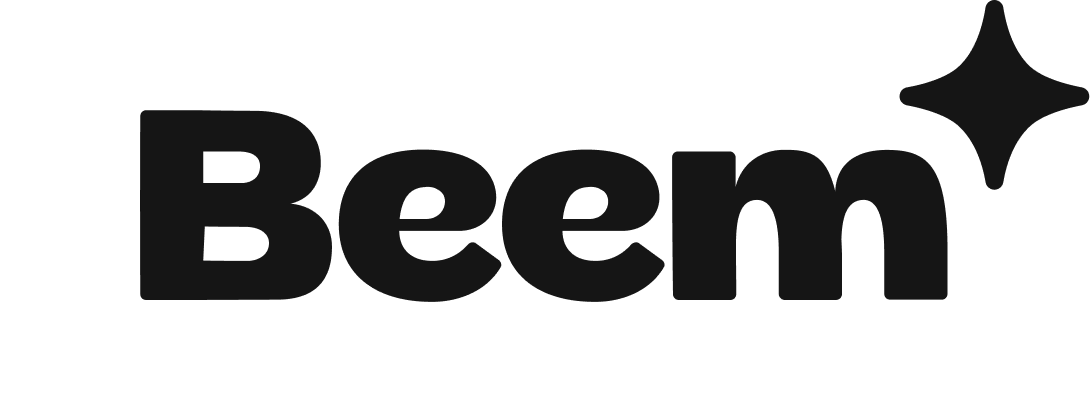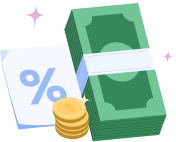When considering where to save money, many wonder about the differences between a High Yield Savings Account (HYSA) and a standard Savings Account. Both options offer a secure place to store money, but there are vital distinctions that can significantly impact your financial goals. Check out Beem to get updated interest rates and compare the latest best high-yield savings accounts that align with your savings goals and priorities. Let’s explore the differences between HYSA and Savings Accounts and the pros and cons of high yield savings accounts.
What is a high yield savings account?
A High Yield Savings Account (HYSA) offers a notably higher Annual Percentage Yield (APY) than traditional or regular Savings Accounts. The primary distinguishing feature of an HYSA is its ability to provide savers with better returns on their deposited funds. Online banks, credit unions, or specific financial institutions typically offer these accounts. They are designed to help individuals grow their savings faster than what is commonly achievable with standard Savings Accounts, making them an attractive option for individuals looking to grow their money with low to moderate risk.
The Better Financial Feed tool on Beem can help you better your saving habits like an expert with on-point financial insights and recommendations.
HYSA vs. Savings Account: What’s the Difference?
Before we explore the pros and cons of high yield savings accounts, here are the key differences between a High Yield Savings Account and a regular Savings Account:
High Yield Savings Account (HYSA)
- Offers a higher Annual Percentage Yield (APY), typically ranging from 3.5% to 4.5% or more.
- Often provided by online banks or credit unions, maximizing their efficiency and cost-effectiveness.
- An attractive option for individuals looking to grow their savings with competitive returns and moderate risk.
- FDIC-insured up to $250,000 per account holder per bank, ensuring safety and security for deposited funds.
- Generally, no minimum balance requirements, making it accessible to a broader range of savers.
- Allows easy access to funds through online banking platforms and mobile apps, although there might be a monthly transaction limit.
- It may have fluctuating APYs based on market conditions, impacting the overall return on savings.
- Potential for fees on specific services, such as exceeding the monthly transaction limit or account maintenance.
Regular Savings Account
- Offers a lower APY compared to HYSAs, usually below 0.33%.
- Available at brick-and-mortar banks and online institutions, providing flexibility for in-person interactions.
- A straightforward and stable option for those seeking a safe place to save money with easy access to funds.
- Depending on the bank’s policies, minimum balance requirements may exist.
- It allows easy access to funds through various channels, such as ATMs and in-person transactions.
- Generally has more stable interest rates than HYSAs, with less impact from market fluctuations.

Interest rates offered by different banks
| Banks | Interest rate (Annual percentage yield) |
| Chase Savings | 0.01% |
| US Bank Standard Savings | 0.01% |
| Wells Fargo Saving Account | 0.01% |
| TD Simple Savings | 0.02% |
| Bank of America Savings Account | 0.01% to 0.04% |
| Citi Savings Account | 0.05% to 1.01% (vary by location) |
Note: The interest rate may vary according to market conditions and location.
Pros and Cons of High Yield Savings Accounts
Pros
- Higher Interest Rates: The primary advantage of HYSAs is their higher interest rates. Traditional savings accounts often have interest rates below 0.33%, while the average rate for high-yield savings accounts is 3.5% to 4.5% or higher, depending on market conditions. This higher interest allows your savings to grow faster over time.
- Safety and Security: Like standard savings accounts, High Yield Savings Accounts are generally FDIC-insured up to $250,000 per account holder per bank. This means your funds are protected, providing peace of mind and minimizing the risk of losing your savings.
- Easy Access to Funds: HYSAs are designed to be accessible, allowing you to withdraw your money whenever needed. While some accounts may limit the number of monthly transactions, you can transfer funds or withdraw cash without facing significant obstacles.
- No Minimum Balance Requirements: Many HYSAs don’t have minimum balance requirements, making them accessible to a broader range of savers. This means you can earn higher interest regardless of the amount you initially deposited.
- Convenient Online Banking: Online banks often offer High Yield Savings Accounts, meaning you can manage your account conveniently anywhere. Online banking platforms typically provide user-friendly interfaces and mobile apps for easy monitoring of your savings.
Cons
- Fluctuating Interest Rates: While HYSAs generally offer higher interest rates, they are still subject to market fluctuations. This means that the interest rate on your account may change over time, impacting the overall return on your savings.
- Limited In-Person Services: As online banks offer most HYSAs, you might miss out on traditional brick-and-mortar banks’ in-person customer service experience. If face-to-face interactions are essential to you, this could be a drawback.
- Opportunity Cost: While HYSAs offer attractive interest rates, the returns are still relatively lower than other investment options such as stocks or mutual funds. If you accept slightly higher risks, investing in the market might provide better long-term returns.
- Potential Fees: Some HYSAs may charge fees for certain services, such as excessive withdrawals or account maintenance. Reading the account terms is essential to understand potential charges that could erode your interest earnings.
- Inflation Impact: Although HYSAs provide better interest rates than standard savings accounts, the interest may not keep pace with inflation. This means your purchasing power could diminish if the interest earned does not outpace inflation rates.
People Also Read – Do I Get Taxed On High-Yield Savings Accounts?
Conclusion
In conclusion, High Yield Savings Accounts (HYSAs) can be a valuable tool for savers looking to earn higher interest on their savings while maintaining safety and accessibility. The pros and cons of high yield savings accounts are many. The main pros include higher interest rates, FDIC insurance, easy access to funds, no minimum balance requirements, and the convenience of online banking. On the other hand, the cons involve fluctuating interest rates, limited in-person services, opportunity costs compared to investments, potential fees, and the impact of inflation. Whether you are saving for short-term goals or building an emergency fund, high-yield savings accounts offer a balance between security and competitive earnings. Get it now with Beem.
Before making a choice, it’s essential to consider the pros and cons of high yield savings accounts, your financial goals, risk tolerance, and the overall state of the economy. For short-term savings goals or emergency funds, HYSAs can be an excellent option, but for long-term wealth building, other investment avenues may be more appropriate.
FAQs
Are High Yield Savings Accounts Safe?
Yes, High Yield Savings Accounts are generally safe and secure. Most HYSAs are FDIC-insured, up to $250,000 per account holder per bank, protecting your funds in case of bank failure.
How do High Yield Savings Accounts Differ From Regular Savings Accounts?
The primary difference lies in the interest rates offered. HYSAs provide higher interest rates, allowing savers to earn more on their deposits. Regular savings accounts, on the other hand, usually offer lower interest rates.
Can I lose Money in a High Yield Savings Account?
While HYSAs are designed to be safe and low-risk, the interest earned may not keep up with inflation rates, resulting in a loss of purchasing power over time. However, your initial deposit amount is not at risk, and you won’t lose money due to market fluctuations.






























